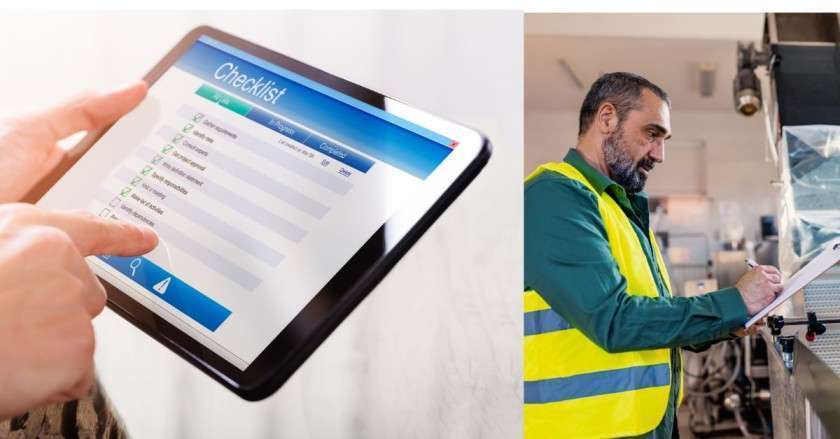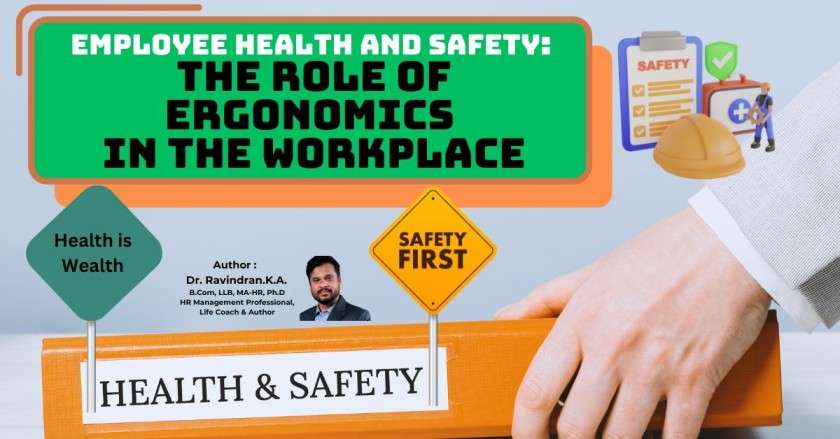How to Conduct a Thorough Employee Health and Safety Risk Assessment
Is your workplace safe for your employees? It’s crucial for employers in India to check and lower risks. But, where do you begin? A detailed employee health and safety risk assessment is key. It might seem hard, but it’s vital for keeping your workers safe and following safety laws.
Thank you for reading this post, don't forget to subscribe!Key Takeaways
- Conducting a thorough risk assessment is a legal requirement for employers in India to protect workers and comply with occupational safety laws.
- Evaluating potential workplace hazards and the likelihood of risks is the first step in creating a safe working environment.
- Effective risk management can help reduce injuries, drive safety program ROI, and demonstrate your commitment to employee wellbeing.
- Consulting with employees and reviewing past incidents are crucial for identifying all potential risks in your workplace.
- Documenting your risk assessment findings and communicating them to your team is key for successful risk mitigation.
Understanding the Importance of Risk Assessments
In India, employers must know the legal needs and the perks of doing detailed risk assessments for employee health and safety. Following health and safety laws is not just a must but also a duty that affects your company a lot.
Legal Requirements for Employers
The Health and Safety at Work (Factories Act) makes it clear that employers in India must protect their workers and others affected by their work. The Management of Health and Safety at Work Regulations say employers must check their places for risks and lower the chance of accidents or sickness.
Benefits of Effective Risk Management
Doing good risk assessments helps companies follow the law and brings many benefits. It cuts down the chance of accidents and illnesses by finding and fixing workplace dangers. This can save money and protect your company’s good name. It also makes the workplace safer, which makes workers happier, more productive, and helps the company stay strong.
An event showed how important risk assessments are. A company was fined huge by the Health and Safety Executive (HSE) because two workers got trapped in moving machinery. Good risk assessments can stop such big problems and keep you in line with health and safety laws.
| Key Benefits of Risk Assessments |
|---|
| Compliance with legal requirements |
| Cost-effective through accident prevention |
| Identification of potential hazards |
| Determination of affected individuals |
| Evaluation of risk levels and prioritization |
| Implementation of appropriate control measures |
| Continuous monitoring and improvement |
By knowing the legal needs and the perks of good risk management, employers can act early to keep their workers safe and well. This helps protect their business’s future too.
Identifying Potential Hazards in the Workplace
The first step in keeping employees safe is to spot hazards at work. These can be physical, chemical, biological, or ergonomic risks. It’s important for employers to know all these risks to keep their workers safe.
Physical, Chemical, Biological, and Ergonomic Hazards
Physical hazards include slippery floors and falling objects. Chemical hazards are things like toxic liquids or gases. Biological hazards are infectious diseases. Ergonomic hazards come from bad work setups that can hurt muscles over time.
Consulting with Employees and Reviewing Past Incidents
To make sure you check everything, walk through the workplace and look at past incidents. Talking to employees helps spot risks you might miss. By using their input and past data, you can tackle hazards before they become big problems.
“Using a cloud-based employee safety solution like SHEQSY can facilitate real-time reporting and collection of information about hazards, near-misses, and incidents.”
- Good risk management makes the workplace safer and boosts productivity.
- Not spotting hazards can lead to more injuries and health issues at work.
- Just by walking around and watching how things are done can help find hazards.
- Designing work safely from the start can cut down on risks a lot.
Evaluating Risks and Determining Severity
After spotting potential dangers at work, the next step is to look at the risks closely. We need to figure out how likely an accident is and how bad it could be. Employers use a risk matrix to sort and focus on hazards. They look at both how likely a risk is and how big its effects could be.
Assessing Likelihood and Potential Impact
The chance of a risk happening is rated from “Frequent” (5 points) to “Improbable” (1 point). The seriousness of the outcome is rated from “Catastrophic” (4 points) to “Negligible” (1 point). By multiplying these ratings, employers can see how big a risk is, with higher scores meaning it’s more urgent.
Considering Vulnerable Groups and Specific Risks
It’s key for employers to think about the special risks some workers face. This includes young people, pregnant women, or those with health issues. They might be more at risk or need extra safety steps. By looking closely at risks and their effects, employers can make plans to keep everyone safe and healthy at work.
| Probability Scale | Severity Scale |
|---|---|
|
|
By carefully looking at risks and their severity, employers can spot the biggest dangers. They can then take steps to lessen these risks.
“Regular review of risk assessment is recommended, especially when changes occur at the workplace such as new work equipment, chemicals, work processes, or modifications to the work organization.”
Employee Health and Safety Risk Assessment Procedures
Doing a thorough risk assessment for employee health and safety is a step-by-step process. It helps employers spot potential dangers, check how risky they are, and take steps to keep their workers safe.
Step-by-Step Approach to Conducting Assessments
- Identify hazards: Look closely at the workplace for things that could hurt people, like chemicals, physical dangers, and ergonomic issues.
- Determine potential harm: Think about how bad each hazard could be, like how serious injuries or illnesses could be.
- Evaluate risks: Figure out how likely and how bad each risk could be. Focus on the biggest ones first.
- Record findings: Write down the hazards, risks, and steps to fix them.
- Review assessments: Check and update the risk assessment when things change at work or new laws come out.
Documenting Findings and Communicating Results
If a company has five or more employees, it must keep a detailed record of its risk assessment process. This record proves the company follows safety laws and helps keep the risk management process working well.
It’s also key to share the risk assessment results with all employees. This way, everyone knows the risks and how to avoid them. It helps create a safe work culture and lets employees play a big part in keeping everyone safe.
| Key Steps in the Risk Assessment Process | Importance |
|---|---|
| Identifying Hazards | Knowing what could harm people is the first step in managing risks. |
| Evaluating Risks | Looking at how likely and how bad risks are helps decide what to do first. |
| Implementing Control Measures | Taking steps to reduce risks keeps employees safe and makes the workplace safer. |
| Documenting and Communicating | Keeping detailed records and sharing the results shows the company cares about safety and builds trust. |
By using a clear risk assessment process, employers can spot, check, and fix health and safety risks at work. Keeping detailed records and sharing the results helps employees do their part in keeping the workplace safe.
Implementing Control Measures and Mitigating Risks
After identifying and evaluating workplace risks, employers must act. They need to put in place effective control measures. This helps to get rid of, lessen, or lessen risks. The hierarchy of controls offers a guide for picking the best strategies to manage risks. It starts with the most effective solutions.
Hierarchy of Controls: Elimination, Substitution, Engineering Controls
At the top, strategies aim to remove the hazard completely. This can be done by taking out the dangerous equipment or substance. If that’s not possible, the next step is to swap the hazard with something less risky.
Engineering controls, like machine guards or ventilation, come next. They keep employees away from the hazard. These controls are very effective.
Administrative Controls and Personal Protective Equipment
When engineering controls aren’t enough, employers should use administrative controls. This includes setting rules, procedures, and training. Personal protective equipment (PPE), like gloves or safety glasses, is the last step. It should be used with other controls.
Employers must make sure their control measures work well. They should check on them often and tell everyone about them. By using the hierarchy of controls, employers can lower risks and make the workplace safer. It’s important to keep checking and updating these measures as things change at work.
“The key to successful risk management is to select the most effective control measures and ensure they are properly implemented and maintained.”
Conclusion
Employers in India must take seriously the task of assessing health and safety risks for their workers. This is key to keeping the workforce safe and meeting safety laws. By spotting dangers, checking risks, and taking steps to control them, employers can make the workplace safer. This helps lower the chance of accidents and illnesses at work.
It’s important to keep updating the risk assessment to make sure it stays useful and effective. Putting the focus on keeping employees safe through a detailed risk assessment helps both workers and companies. It prevents financial and damage to reputation from workplace incidents. Keeping track of important points and the need for ongoing risk checks helps companies stay alert and proactive in protecting their employees.
Being dedicated to keeping employees safe and healthy is more than just following the law. It’s a moral duty that helps the company succeed and last in the long run.
FAQ
What are the legal requirements for employers in India regarding employee health and safety risk assessments?
In India, employers must protect their employees and others affected by their work under the Health and Safety at Work Act. They need to assess risks at their workplaces to find hazards and lower the chance of accidents or illnesses.
What are the benefits of conducting effective risk assessments in the workplace?
Doing risk assessments helps companies follow the law and brings many benefits. It cuts down on workplace accidents and injuries, lowers financial and reputation risks, and promotes a safe work culture.
What types of hazards should be identified during a workplace risk assessment?
Hazards can be physical (like slippery floors or falling objects), chemical (like toxic substances), biological (like infectious diseases), or ergonomic (like bad workstation design). Employers should walk through the workplace, look at past incidents, and talk to employees to find all hazards.
How do employers evaluate the risks associated with identified hazards?
After spotting hazards, employers need to check how likely an incident is and how bad it could be. They use a risk matrix to look at both the chance of an event and its impact. They also think about risks for certain workers, like young people, pregnant women, or those with health issues.
What are the key steps in conducting a thorough employee health and safety risk assessment?
A good risk assessment follows a step-by-step process. First, identify hazards. Then, evaluate risks and decide on control measures. Finally, document everything. If you have five or more employees, keep a written record of your findings and share the results with all affected workers.
How can employers effectively implement control measures to mitigate workplace risks?
After finding and checking risks, employers must act to reduce them. They should use the hierarchy of controls to pick the best ways to lower risks. This means getting rid of the hazard, using a safer alternative, or using engineering, administrative, or PPE controls.
 hroptimum
hroptimum




